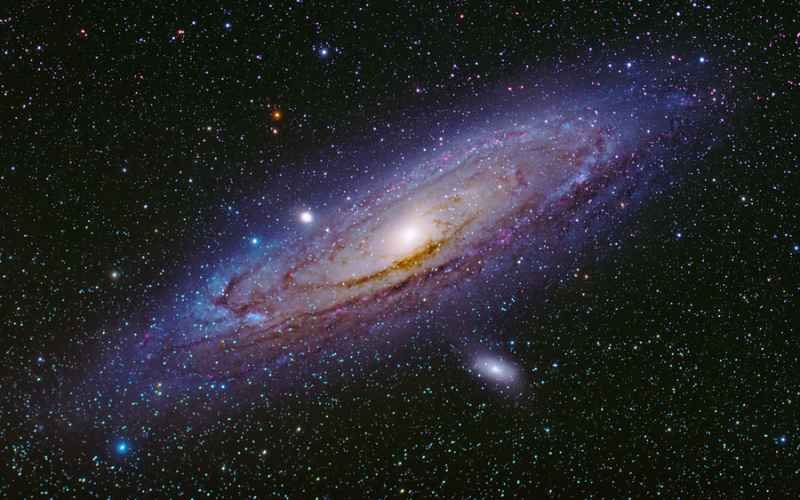Elaborating on Our Cosmic Adventure through the Milky Way! 🌌✨
Welcome, fellow space enthusiasts, adventurers of the cosmos, to a journey that will take us through the marvels of our home galaxy, the Milky Way! 🌌✨
Exploring the Milky Way: A Galactic Journey

Exploring the Milky Way: A Galactic Journey
A Galaxy of Wonders
Imagine for a moment the vastness of our galactic home, stretching across 100,000 light-years. Within this immense expanse, there are countless stars, each with its own stories of birth, life, and sometimes even death. These stars, ranging from fiery giants to faint dwarfs, paint the canvas of our night sky with their twinkling lights, inviting us to gaze in wonder.
Planetary Tales
Around many of these stars, planets orbit in delicate dances, each with its own unique character. From the scorching infernos of close-in exoplanets to the frozen mysteries of distant ice worlds, these planets hold the potential for life, adventure, and discovery.
Nebulae: Cosmic Cloudscapes
As we journey further into the Milky Way, we encounter the ethereal beauty of nebulae. These cosmic clouds of gas and dust are the stellar nurseries where stars are born. Imagine the grandeur of the Orion Nebula, a swirling cauldron of creation, where new stars emerge from the cosmic dust, their brilliance illuminating the darkness.
The Enigmatic Dark Matter
Yet, as we marvel at the visible wonders of the Milky Way, we are reminded of the invisible forces that shape it. Dark matter, a mysterious substance that eludes detection, is thought to weave its invisible threads throughout our galaxy. It’s a reminder that the vast majority of the universe’s mass remains hidden from our eyes, challenging us to explore the unknown.
Cosmic Giants: Black Holes
At the heart of the Milky Way lies a cosmic beast, Sagittarius A*, a supermassive black hole. These gravitational monsters, born from the remnants of massive stars, are the cosmic architects that sculpt the galaxy’s structure. They bend light, time, and space itself, creating mesmerizing displays of cosmic ballet around them.
Unraveling Galactic History
As we journey through the Milky Way, we also embark on a voyage through time. The galaxy has evolved over billions of years, shaped by collisions with other galaxies and the relentless dance of stars. Each star tells a tale of its journey, from the chaotic birth pangs of a stellar nursery to the serene glow of a mature star’s twilight years.
Join Us on this Cosmic Voyage
So, dear fellow space enthusiasts, let us embark together on this cosmic adventure through the Milky Way. Let us gaze upon the stars with wonder, ponder the mysteries of dark matter, and marvel at the cosmic ballet of black holes. Whether you’re an amateur stargazer or a seasoned astrophysicist, there is always more to discover, more to learn, and more to inspire us.
Together, we’ll navigate the celestial seas of our galaxy, exploring its wonders one star at a time. So fasten your seatbelts, adjust your telescopes, and join us as we journey through the Milky Way, a galaxy of wonders waiting to be explored! 🌌✨
Introduction: What is the Milky Way?
Observing the Milky Way
Stargazing
For anyone captivated by the night sky, witnessing the Milky Way firsthand is a truly mesmerizing experience. The best way to observe it is to escape the bright lights of cities and find a location with minimal light pollution. In such dark skies, the Milky Way appears as a luminous band stretching across the heavens.
- Location: Seek out places far from city lights, such as remote rural areas, national parks, or observatories. These locations offer the clearest views of the Milky Way.
- Time: The best time to observe the Milky Way is during its prime viewing season, typically from late spring to early autumn. Choose a night when the moon is not too bright, allowing the Milky Way’s fainter details to shine through.
- Binoculars or Telescope: While the naked eye can reveal the Milky Way’s broad band of light, using binoculars or a telescope can enhance the experience. Binoculars, in particular, provide a closer look at star clusters and nebulae within the galaxy.
Astrophotography
For those with a passion for photography, capturing the Milky Way in all its glory is a rewarding endeavor. Astrophotography allows enthusiasts to create stunning images that reveal the intricate details of our galactic home.
- Equipment: To photograph the Milky Way, you’ll need a DSLR or mirrorless camera with manual settings, a sturdy tripod, and a wide-angle lens with a large aperture (such as f/2.8 or wider).
- Settings: Astrophotography often involves long-exposure shots to capture the faint light of the Milky Way. Set your camera to manual mode, choose a wide aperture to gather more light, and use a long exposure time (typically 15-30 seconds).
- Location and Timing: Similar to stargazing, finding a dark sky location away from city lights is crucial. Look for nights with clear skies and minimal moonlight for the best results.
- Post-Processing: After capturing the images, astrophotographers often use post-processing software to enhance the details, reduce noise, and bring out the colors of the Milky Way.
Tips for a Memorable Experience
Prepare Ahead
- Check weather forecasts and plan your stargazing or astrophotography session on a clear night.
- Bring warm clothing and comfortable gear, as stargazing can be chilly, especially in open, dark areas.
- Consider bringing a red flashlight to preserve your night vision without disrupting others’ observations.
Learn the Sky
- Familiarize yourself with the constellations and landmarks of the Milky Way. Apps like Stellarium or SkySafari can help you identify celestial objects.
- Look for dark lanes, bright star clusters, and the central bulge of the galaxy as you gaze at the Milky Way.
Capture the Moment
- Experiment with different camera settings and compositions to capture the Milky Way’s beauty in your astrophotography.
- Take multiple shots with varying exposures and settings to find the best results.
- Enjoy the moment! Whether through the eyepiece of a telescope or the lens of a camera, take the time to savor the awe-inspiring sight of our galactic home.
Why it is called a Milky Way?
Conclusion: Embracing the Cosmic Wonder
Our journey through the Milky Way has taken us on a cosmic odyssey, from the dazzling stars to the mysterious dark matter, from the birthplaces of stars in nebulae to the silent abyss of black holes. In this vast galactic tapestry, we find ourselves as tiny inhabitants, yet our curiosity and exploration connect us with the grandeur of the cosmos.
As we gaze up at the luminous band of the Milky Way stretching across the night sky, we are reminded of our place in this vast universe. Every star, every planet, every nebula holds a story of cosmic evolution, of the forces that shape galaxies and the birth of new worlds.
In our quest for understanding, we unveil the mysteries of dark matter, peer into the depths of supermassive black holes, and trace the history of our galactic home through the ages. Through stargazing and astrophotography, we capture fleeting moments of beauty, freezing in time the majesty of the Milky Way.
But beyond the science and the observations, there is a deeper connection—an awe that transcends words. It is the feeling of standing under a star-filled sky, humbled by the vastness of the universe yet inspired by the wonder it holds.
So, as we conclude our journey through the Milky Way, let us carry with us the realization that we are part of something much larger. Our curiosity, our exploration, our quest for knowledge—they are all threads woven into the fabric of the cosmos. In embracing the cosmic wonder, we embrace our place in this magnificent universe, forever connected to the stars that shine brightly in the night sky.
As we continue to explore and unravel the mysteries of the Milky Way and beyond, let us do so with a sense of wonder and humility. For in the grandeur of the cosmos, we find not only the answers to our questions but also the inspiration to ask new ones, to dream of what lies beyond, and to marvel at the infinite possibilities that await us among the stars.
- is the Milky Way?
- The Milky Way is a spiral galaxy that contains our solar system, including Earth. It’s a vast collection of stars, planets, gas, and dust, bound together by gravity.
- How did the Milky Way get its name?
- The name “Milky Way” comes from the Latin phrase “via lactea,” which means “milky road” or “milky way.” It was named by the ancient Greeks and Romans.
- How many stars are in the Milky Way?
- There are estimated to be around 100 to 400 billion stars in the Milky Way galaxy.
- How big is the Milky Way?
- The Milky Way has a diameter of about 100,000 light-years and is roughly 1,000 light-years thick.
- Where is the Milky Way located?
- The Milky Way is located in the Local Group of galaxies, about 26,000 light-years from the center of the galaxy.
- What is the shape of the Milky Way?
- The Milky Way is a spiral galaxy, with a central bulge surrounded by spiral arms.
- How old is the Milky Way?
- The Milky Way is estimated to be about 13.6 billion years old, roughly the same age as the universe.
- Is the Milky Way the only galaxy in the universe?
- No, the Milky Way is just one of billions of galaxies in the observable universe.
- Can we see the Milky Way from Earth?
- Yes, we can see the Milky Way from Earth. It appears as a band of light stretching across the night sky.
- When is the best time to see the Milky Way?
- The best time to see the Milky Way is during the summer months in the Northern Hemisphere and the winter months in the Southern Hemisphere.
- What is the Galactic Center of the Milky Way?
- The Galactic Center is the rotational center of the Milky Way galaxy, located in the direction of the constellation Sagittarius.
- How fast does the Milky Way rotate?
- The Milky Way rotates at a speed of about 828,000 kilometers per hour (514,000 miles per hour).
- Does the Milky Way have a supermassive black hole?
- Yes, the Milky Way has a supermassive black hole at its center, known as Sagittarius A*.
- What is the nearest galaxy to the Milky Way?
- The Andromeda Galaxy (M31) is the nearest spiral galaxy to the Milky Way, located about 2.5 million light-years away.
- What are the Milky Way’s spiral arms?
- The Milky Way has several spiral arms, including the Perseus Arm, the Norma Arm, the Scutum-Centaurus Arm, and others.
- How many planets are in the Milky Way?
- The Milky Way is estimated to have billions of planets, including those in our solar system and many more in other star systems.
- What is the Halo of the Milky Way?
- The Halo is a region of the Milky Way that surrounds the main disk, containing old stars, globular clusters, and dark matter.
- What are the Magellanic Clouds?
- The Magellanic Clouds are two irregular dwarf galaxies that are satellite galaxies of the Milky Way.
- What is the fate of the Milky Way?
- In about 4 billion years, the Milky Way is expected to collide with the Andromeda Galaxy, forming a new galaxy known as Milkomeda.
- Can we travel to other galaxies like the Milky Way?
- With our current technology, traveling to other galaxies like the Milky Way is not feasible, as the distances are immense.









